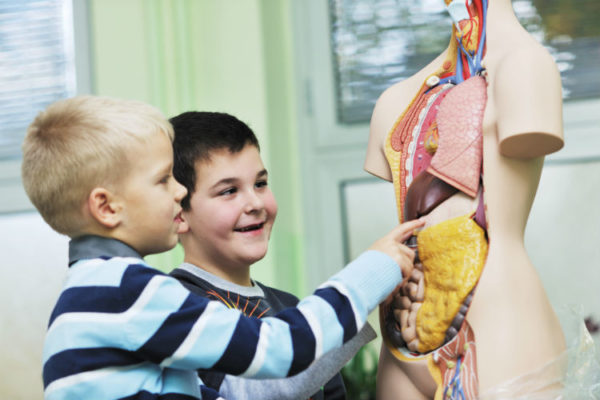It’s a well-known fact that STEM (Science, Technology, Engineering, and Math) careers pay well and have high job placement rates. Despite this, K-12 students show less interest in pursuing careers in STEM disciplines, partly because teachers don’t introduce them to STEM concepts until middle school or high school. Educators traditionally focus on math and language arts, rather than all parts of STEM in early school years.
Teachers are working to change this trend by broadening their curriculum to include more STEM and STEAM topics. STEAM refers to programs that focus on both STEM subjects and on the arts. In STEM and STEAM education, youth don’t learn what to think, but instead, are taught how to think and approach real-life problems critically. By fostering this interest early on, educators are paving the way for the present youth to be future leaders and innovators.
Encouraging Collaboration
Professionals from all STEM and STEAM disciplines will need to collaborate in the future to solve the problems of the 21st century, including dwindling environmental resources and global climate change. When teachers expose students to these complex topics early on in their education, they can encourage them to practice working together to develop solutions.
Early experience with teamwork and group brainstorming gives students practice with considering multiple perspectives. It also promotes the development of more creative, and potentially more complete solutions to complex problems.
Create Individual Learning Paths
Different individuals learn best in different environments and different ways. In addition to traditional whiteboards and PowerPoint slides, videos and multimedia experience can enhance the way students learn about STEM and STEAM topics. Teachers can break down complex ideas and demonstrate them step by step at a classroom’s pace. Students will retain knowledge better since they can hear and see what they are learning, rather than just reading print material.
Young students enjoy participating in hands-on activities. They can see how to build different things and how they work. Incorporating STEM and STEAM activities into classroom settings can help children develop a basic understanding of these topics early on and debunk the myth that these issues are tough to learn or comprehend.
STEM and STEAM education also gives students the opportunity to explore different aspects of topics which result in non-linear learning paths. Students can build more on their areas of interest and ultimately own their personal knowledge growth. They’ll be more likely to retain what they’ve learned since it’s something they’re personally vested in.
Developing Unique Perspectives
Engineers, artists, scientists and mathematicians all approach problems differently and see unique sides of multifaceted issues. When students only learn one component of STEM and STEAM education, they don’t develop the thinking skills needed to comprehend the full spectrum of real-world problems.
A rounded education focusing on developing creative, critical and logical thinking skills enables students to consider all aspects of an issue. Students are then able to develop robust, comprehensive and creative solutions to problems instead of focusing solely on function.
Directly Applicable Topics
STEM and STEAM topics are directly applicable to the real world. Students can walk outside of the classroom and immediately see the issues they learned about coming to life around them. Educators focusing on these topics can use this to their advantage by encouraging students to look for real-world examples of STEM and STEAM topics in their daily life.
As students realize they are learning about information directly relevant to their environment, they will see how their education can benefit their community and the world as a whole. This will generate a growing interest in STEM and STEAM ideas, or, at the very least, enable students to see their relevance.
By incorporating more STEM and STEAM topics into early education, teachers are helping students create a lifelong interest in pursuing STEM and STEAM careers.

This Women of Green guest blog is by Megan Ray Nichols. Megan writes about many environmental topics including, renewable energy, conservation and sustainability. She invites you to join the discussion on her own blog, Schooled By Science.
Women of Green is TURNING UP THE VOLUME of the feminine voice on the planet in order to create the world we know is possible.

